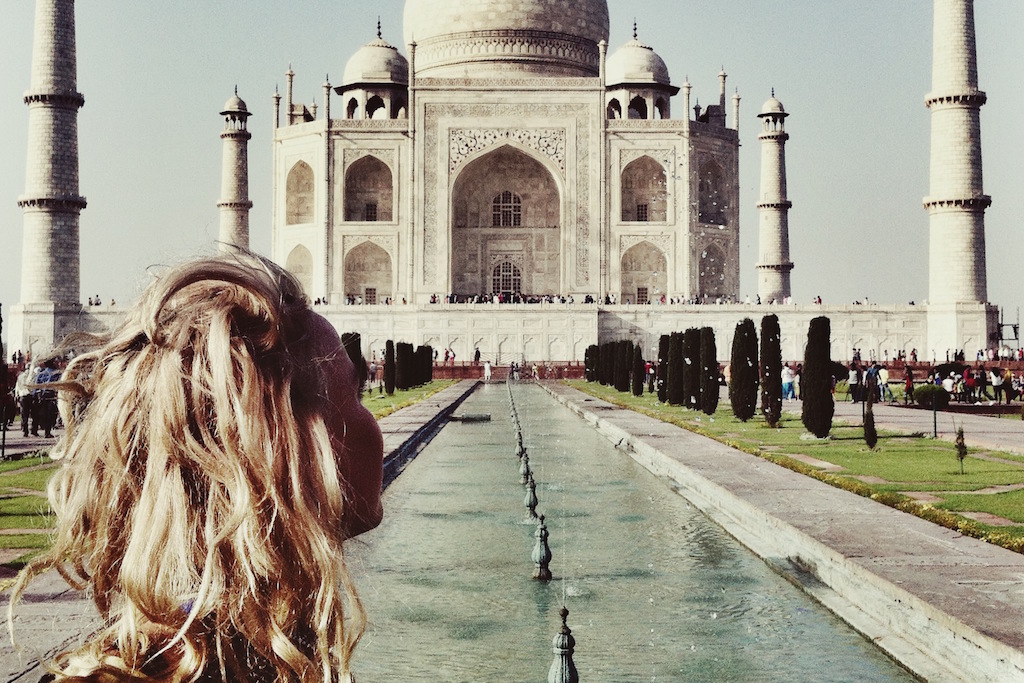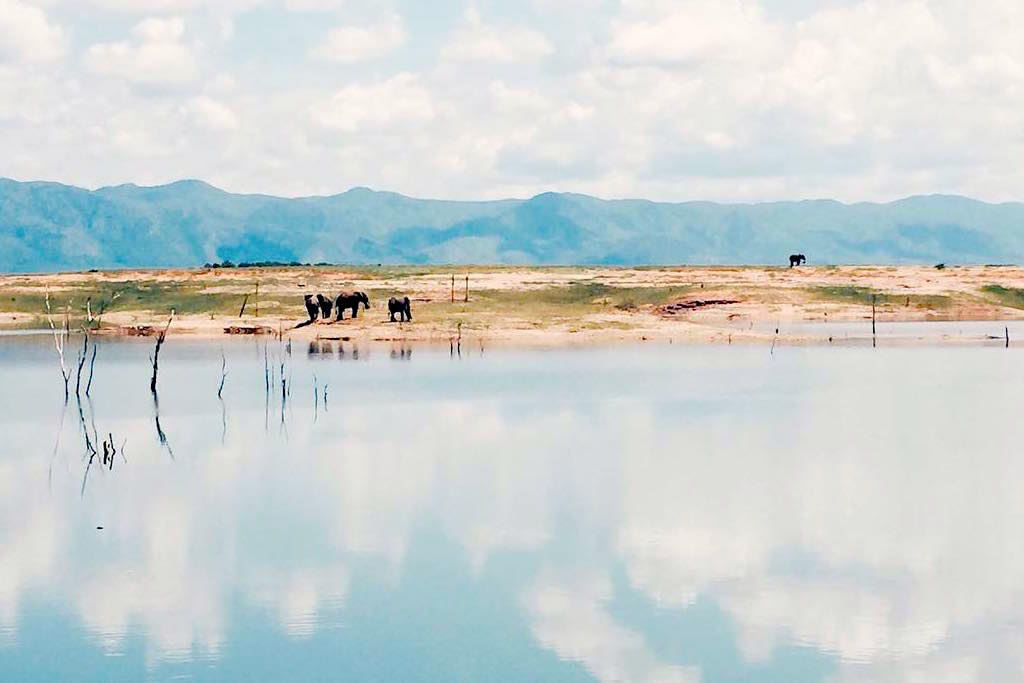
Brought to you by Contiki
Brittney Rigby won a trip to India thanks to Contiki. Here, she shares the highlights of her travels with us.
From visiting Sikh kitchens and Asia’s largest spice markets in Delhi to seeing tigers in Ranthambhore, haggling in Udaipur markets, pulling back the curtain on Mumbai and lazing about in Goa, the 12 days I spent in India were full of variety. I saw distinct cultures side-by-side (with Hindu temples, mosques and churches coexisting on the same city block) and travelled through eclectic terrain – from chaotic epicentres to national parks, lakeside cities and beachside states. Here are some of the most memorable moments from my trip…
Delhi
My time in Delhi kicked off with a visit to Gurdwara Bangla Sahib, a Sikh temple. The kitchen feeds 23,000-24,000 people per day as part of the Sikh tradition of langar (a Punjabi term for ‘free kitchen’). Though located in houses of worship, these kitchens offer free food to everyone, regardless of religious affiliation, colour, caste or creed. They’re run entirely on the labour of volunteers.
I watch while the women sit upon stone slabs preparing chapattis and men stir curries in giant pots. Meanwhile, thousands of people – from Delhi’s homeless to overseas visitors – begin to file in to the enormous, empty hall behind us to wait for a vegetarian lunch.

After taking a bumpy rickshaw ride down narrow lanes (where we barely miss taking out pedestrians and cows) we stop to get jalebis, a vibrant, orange-coloured Indian dessert made from deep-fried flour batter shaped into spirals. The jalebis taste like sunshine: warm and fried and sugary.
We arrive at the biggest spice market in Asia, where the chilli makes our noses run and throats burn. We weave between sacks of red chillis and climb up a narrow staircase, emerging onto a rooftop where a few spice traders are taking a cigarette break. The view is lovely but dislocating all at once. Washing hangs, corrugated iron rusts, and pigeons are everywhere. It’s bustling and intoxicating – a place unlike anywhere I’ve ever been.
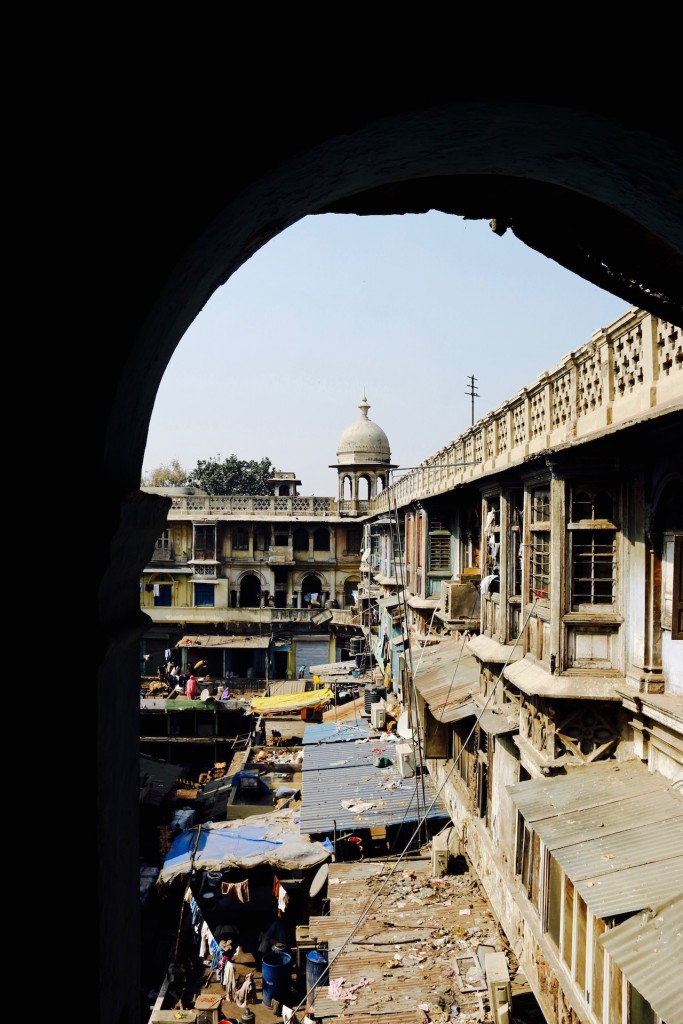
Jaipur
Next we head to Jaipur, which is known as the Pink City for good reason. In Old Jaipur, the coral-coloured buildings provide a picture-perfect backdrop for snake charmers and street hawkers.
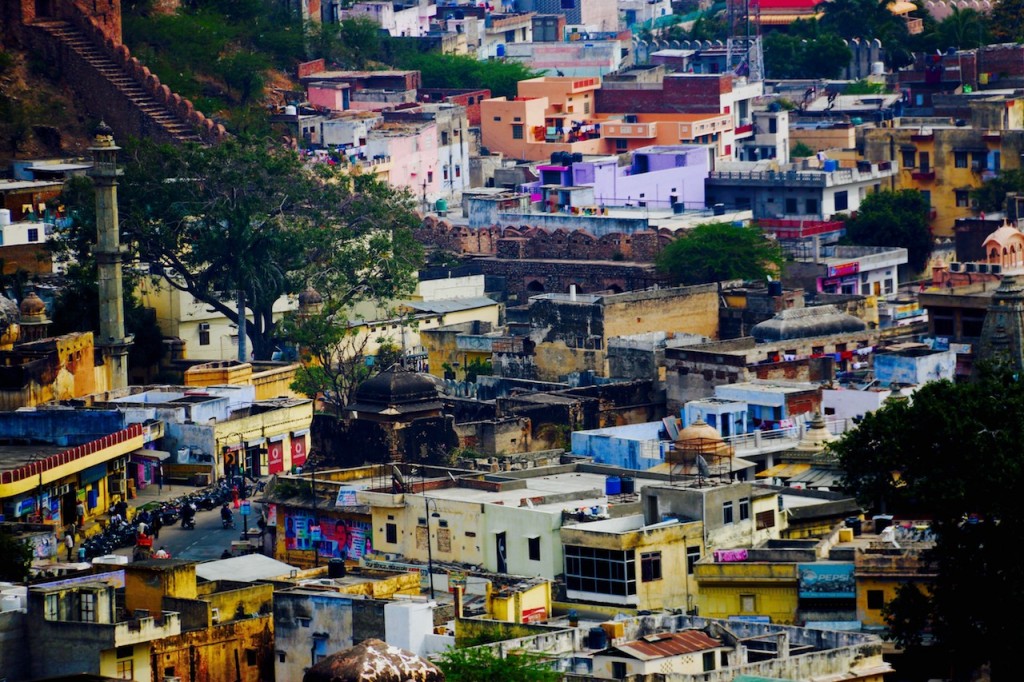
We scale a mountain as part of a hike that crosses the Silk Road, and the city’s own Great Wall matches our ascent.

At the summit, we’re the only people in sight, until uniformed school children run towards us, towing backpacks larger than their very small bodies. They’re on their way to school – the Silk Road is a shortcut, cutting a two-hour journey along the highway down to 20 minutes.
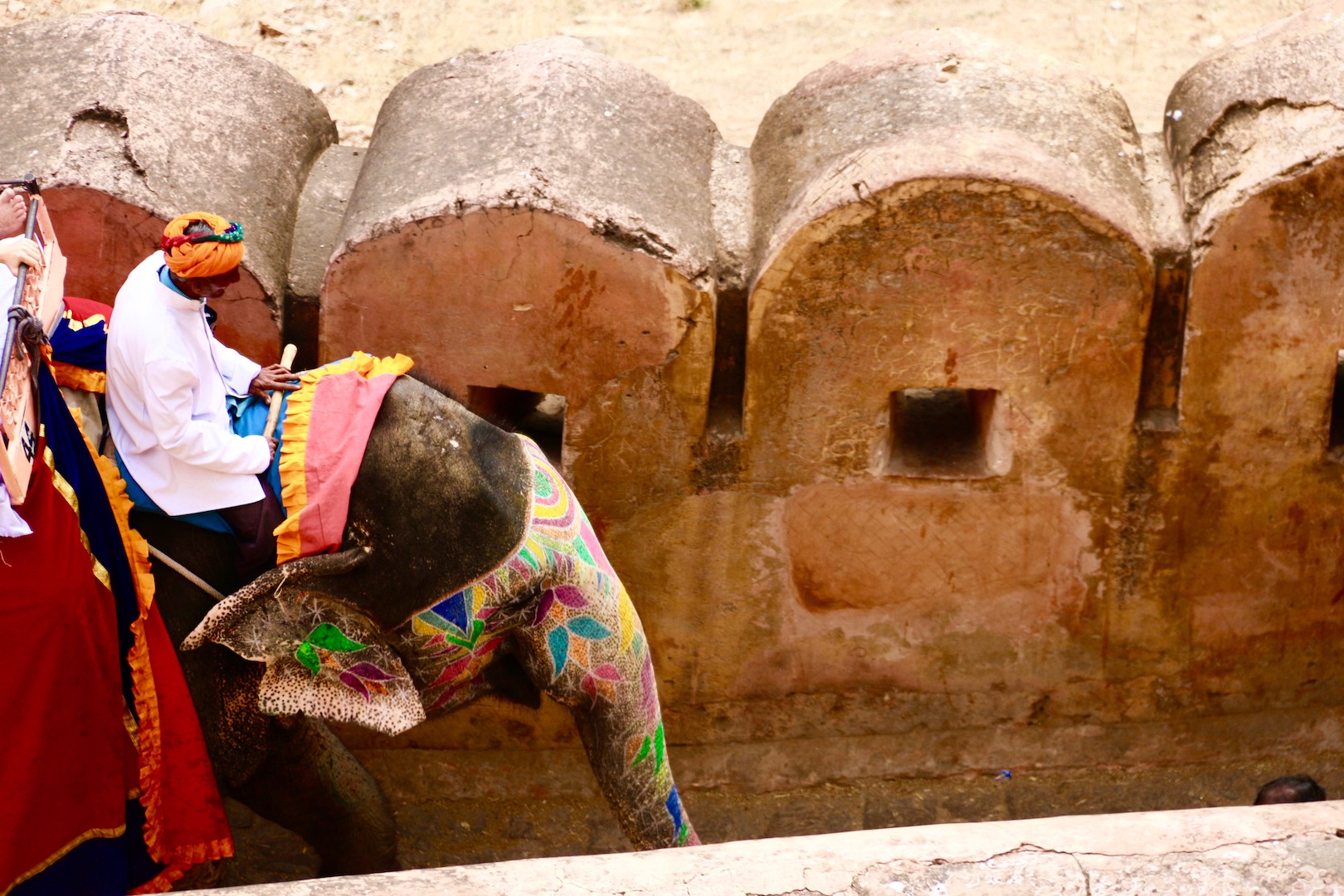
We climb down and head to the Amber Fort, where painted elephants carry tourists up a curving incline. Mirrored walls and ceilings sparkle, hand-painted frescoes speak to Jaipur’s history, and manicured gardens provide a respite from the city.
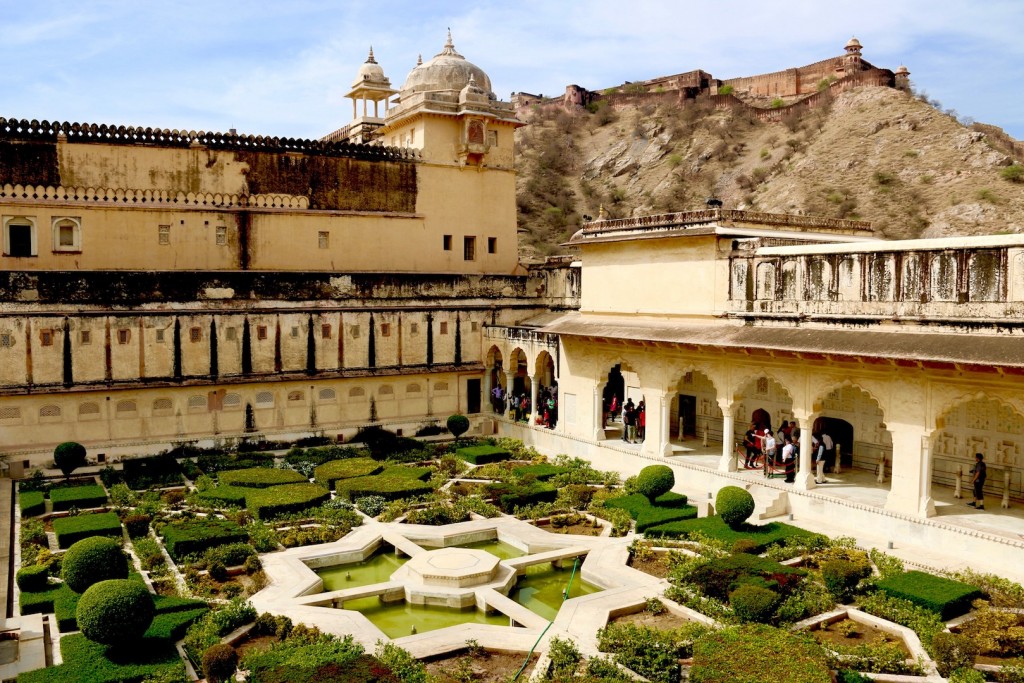
The City Palace is equally impressive, all musk-coloured walls and delicate chandeliers. It’s impossible for our expensive camera lenses and iPhone selfies to do any of it justice.
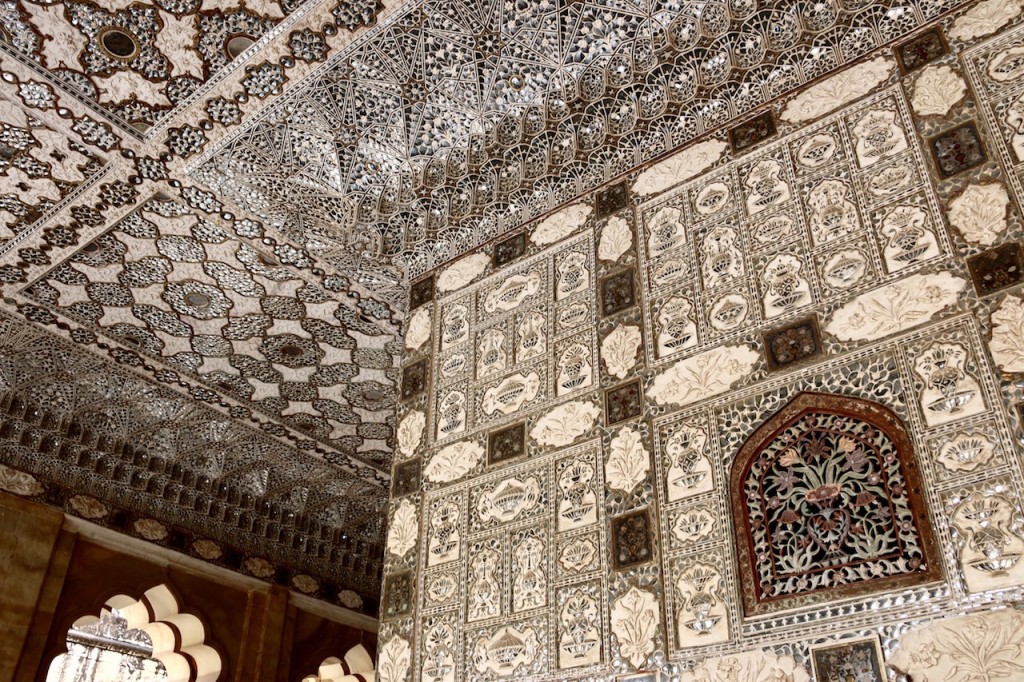
Mumbai
We arrive in Mumbai in mid-afternoon, and are immediately thrust into its hustle and bustle. Underprivileged locals push up against the city’s rich. The largest slum in Asia is just 10 minutes down the road from the most expensive house in the world; a US$2.1 billion, 21-storey skyscraper that houses nine floors of luxury cars, including one floor for the owner’s cow (Hindus believe that the Gods live in the belly of a cow, and aim to feed a cow every morning to receive good karma).
We have lunch at Café Leopold, where the bullet holes of the 2008 terrorist attacks are still visible — a defiant refusal to patch up history.
The next morning, we peel back the facade of the city to look at what’s underneath: the invisible people who keep Mumbai running.
First, we head to the fish markets. We wear shoe guards to protect our Nikes from the fish guts on the ground and leave our cameras on the bus (photography has been banned since the terrorist attacks). Koli people, the native fisher folk of Mumbai, have worked the markets for generations. But it’s the Koli women who run the show around here. While the men throw fish along a production line from boat to basket, women attend auctions that spring up along the dock. As soon as a certain price is reached, the auction finishes and the next one starts.

If you make a Koli woman smile, “buy a lottery ticket, it will be your lucky day,” says our tour guide. We don’t see a single twitch of the lips; these women mean business. They rush around, filling the baskets on their heads with the day’s best catches, preparing to walk back to their villages or carpool home. It’s not yet 5:00 am, but they have a long day ahead. Once the markets have been conquered, they’ll make deliveries to their clients. If you want fish in Mumbai, you don’t visit a shop. A Koli woman visits you.
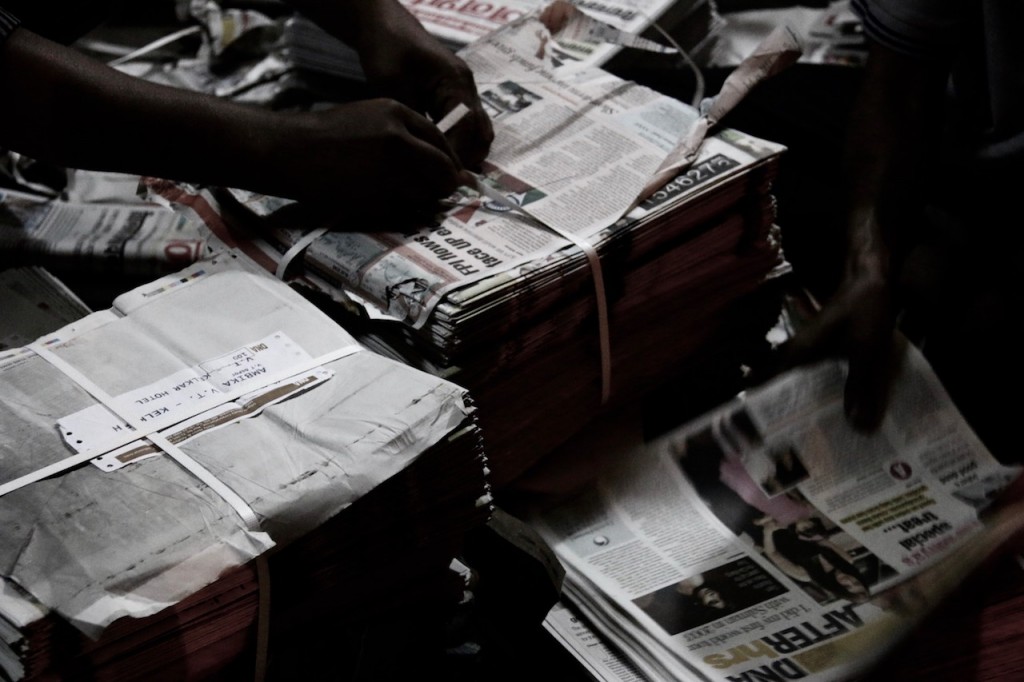
Then we see the newspaper sorting. Dozens of men sit along a colonial-style building in the middle of the city, sorting newspapers into piles by publication and language. But there’s a catch: these men can’t read. They organise the newspapers through recognition of symbols and colour. We sip on chai – the best I tasted in India – as we watch. Bikes await, ready to pedal the papers away.
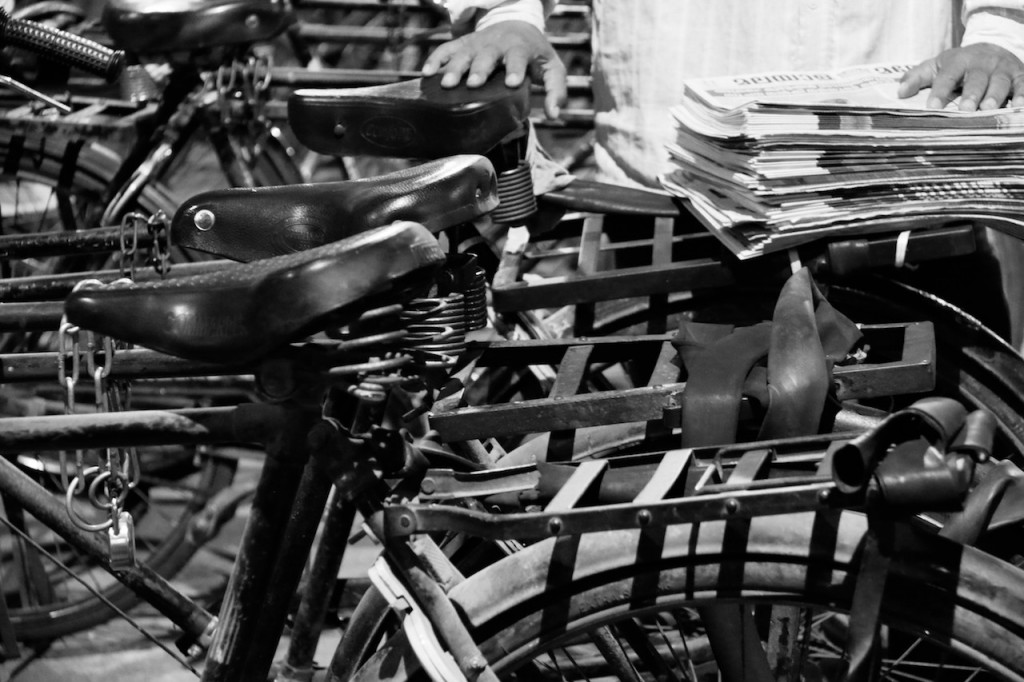
And then we’re off again. The fruit and vegetable markets are chaotic, with Indian fruits displayed alongside mountains of pineapples and endless bananas.
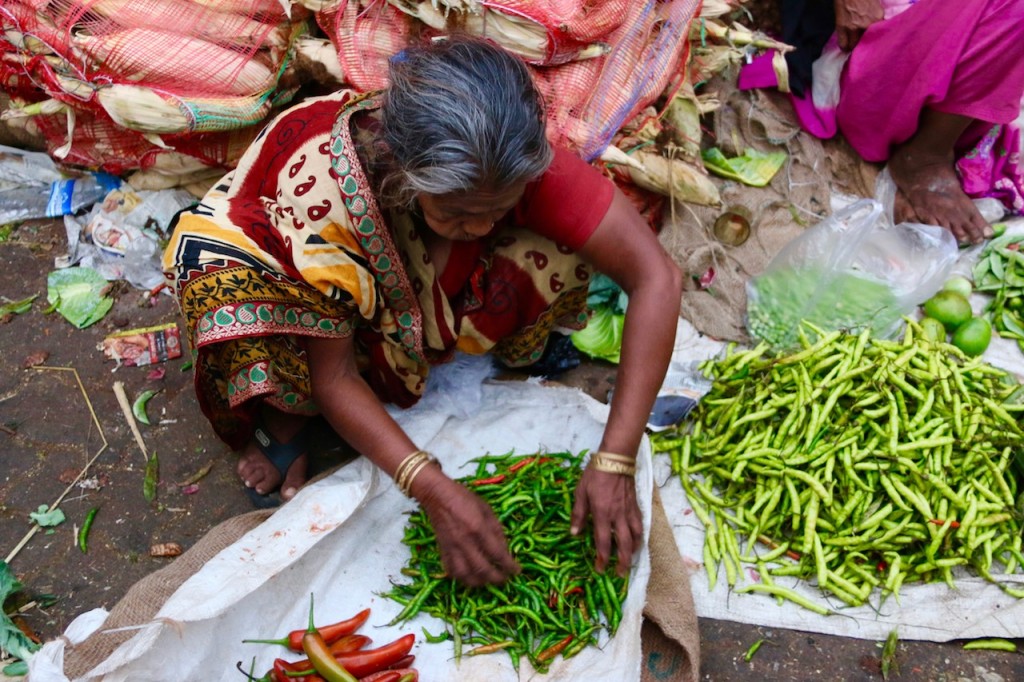
The flower markets are the best possible note to finish on. We’re gifted small bouquets and watch as traders arrange and de-thorn their blooms.
It’s not even 9:00 am, but the markets have disappeared for another day.
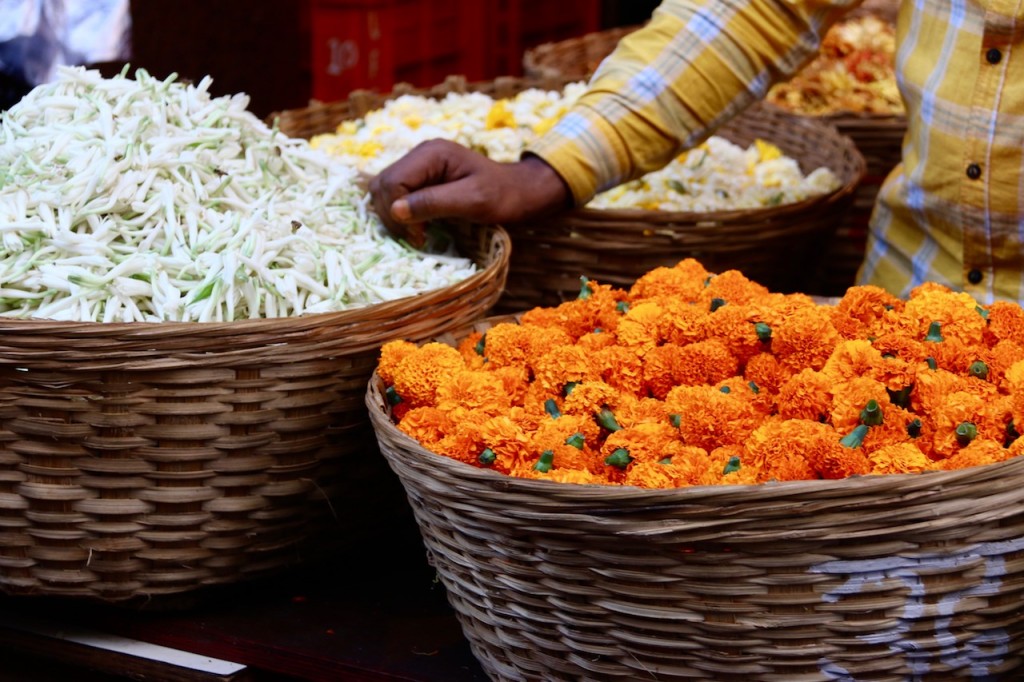
Goa
Lastly we make our way to Goa. Relaxed and beachy, it’s a whole other world. Saris are swapped for bikinis, white men stroll around with their shirts off, and markets line the streets. We trek down to the beach for a morning yoga session, performing our downward dogs and Surya Namaskars as the sun rises. It’s a fitting way to say goodbye to India.
–
All photos: Brittney Rigby
–
Old and new, colour and chaos, sticky cities and lush mountain ranges – India is a bustling cacophony of wonderful that blazes a trail in your memory long after you return home. Learn more about Contiki’s Eternal India tour here.

Brought to you by Contiki


